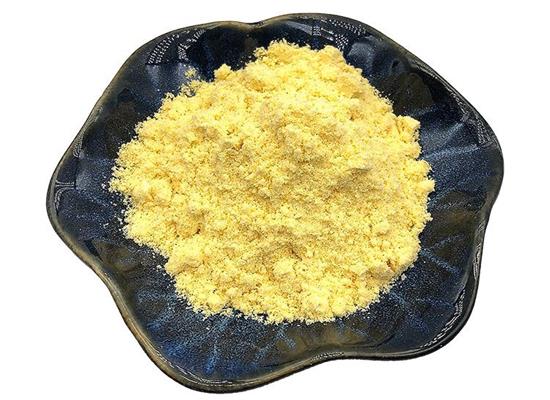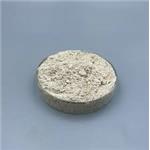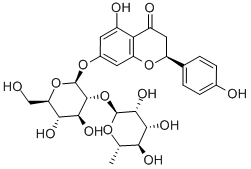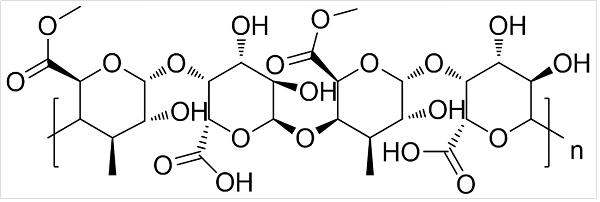Naringin: Pharmacokinetics, Biological Activities and Therapeutic Application
General Description
Naringin, a flavonoid compound, exhibits variable solubility, being slightly soluble in water and more soluble in polar organic solvents due to its hydrophilic sugar residues. As a class IV drug, its oral bioavailability suffers from limited solubility and low permeability. Following oral administration, Naringin undergoes enzymatic degradation, predominantly in the acidic stomach, leading to metabolites like Inosine. Its absorption is hindered by its hydrophobic structure, but gut microbiota play a crucial role in converting it into bioactive forms, including Naringenin. Naringin demonstrates various biological activities, such as antioxidant, anti-inflammatory, and anticancer effects, although it has not been clinically approved as a treatment due to challenges like low bioavailability and intense metabolism. Strategies to enhance its effectiveness include improving solubility, utilizing encapsulation techniques, and exploring micro- and nanoformulations, which can protect Naringin during circulation and optimize its therapeutic potential through its metabolites.

Figure 1. Naringin
Pharmacokinetics
Solubility
Naringin is a flavonoid compound that demonstrates considerable variability in solubility, particularly depending on the solvent type and temperature. It is known to be slightly soluble in water, with a solubility of 1 mg/mL at 40 °C. In organic solvents, Naringin exhibits higher solubility in polar solvents such as methanol, ethanol, and ethyl acetate, compared to nonpolar solvents like petroleum ether or hexane. This enhanced solubility in polar environments is attributed to the presence of hydrophilic sugar residues in its molecular structure. Formulating Naringin as a class IV drug within the Biopharmaceutical Classification of Drugs indicates significant challenges regarding its oral bioavailability, which is heavily influenced by its limited solubility and low permeability. Additionally, this compound is susceptible to enzymatic degradation, particularly in acidic conditions of the stomach, primarily involving the action of β-glycosidase. Such metabolic processes can lead to its transformation into Inosine, among other metabolites, which plays a crucial role in its pharmacokinetics. 1
Metabolism and Absorption
The metabolism of Naringin is profoundly influenced by gut microbiota, which convert this compound into various bioactive metabolites. After oral administration, Naringin faces limited absorption in the gastrointestinal tract, primarily due to its large hydrophobic ring structure. Early metabolic events involve the removal of rhamnose followed by glucose, performed by gut bacteria. Notably, Naringin is efficiently converted into its aglycone form, Naringenin, as well as other flavonoid metabolites. The microbial metabolites, including Inosine, significantly contribute to the physiological effects associated with Naringin. Recent research highlights that the absence of these microbial transformations can severely diminish the overall bioactivity of Naringin, underscoring the importance of gut flora in its pharmacokinetic profile. Following ingestion, Naringin is absorbed via passive diffusion and proton-coupled active transport mechanisms. Although rapid absorption occurs soon after administration, subsequent metabolism into phenolic acids and other conjugates such as Naringenin glucuronide results in a complex pharmacokinetic landscape, further illustrating the intricate interplay between Naringin and gut microbiota. 1
Biological Activities
Naringin exhibits a myriad of biological activities that contribute to its therapeutic potential. The therapeutic effects of Naringin are primarily attributed to its flavonoid structure, characterized by hydroxyl groups and sugar moieties, which play a significant role in its bioactivity. Recent studies have highlighted that Naringin can modulate various protein and enzyme expressions, impacting multiple biological pathways. Specifically, Naringin demonstrates antioxidant, neuroprotective, anti-inflammatory, antiapoptotic, antiulcer, antiosteoporotic, and anticancer effects. These properties are partly attributed to the transformation of Naringin by gut microbiota into metabolites such as Inosine, which can further enhance its biological effects. The presence of Inosine and other metabolites is crucial in mediating Naringin's health benefits. With the growing interest in natural compounds, Naringin is increasingly incorporated into phytopharmaceutical formulations and dietary supplements, underscoring its potential in promoting health and preventing a variety of diseases. 1
Therapeutic Applications
Naringin has garnered significant interest for its potential therapeutic applications in managing various diseases, particularly due to its antioxidant, anti-inflammatory, and anticancer properties. However, despite its promising health benefits, Naringin has not yet secured approval for clinical use as a standalone treatment or in combination with other bioactive compounds. One of the primary challenges hindering its clinical application is the intense in vivo metabolism of flavonoids, which limits Naringin's therapeutic efficacy. Additionally, the low solubility and dissolution rate of Naringin lead to its low bioavailability, estimated at around 8.8% when administered orally. This issue is compounded by the compound's degradation in acidic environments and susceptibility to enzymatic metabolism by gut microbiota, specifically by enzymes such as β-glucosidase. Interestingly, metabolites like Inosine, produced during Naringin's metabolic breakdown, can enhance its biological effects, indicating a need to focus on optimizing these pathways for therapeutic effectiveness. 2
Strategies to Enhance Naringin's Bioavailability
To address the limitations associated with Naringin's bioavailability and clinical efficacy, researchers have proposed several strategies. These strategies include modifying the solubility and dissolution rates of Naringin and preventing its degradation by employing encapsulation techniques utilizing nanoparticles or microparticles. Additionally, intravenous administration poses its challenges, as Naringin can degrade during circulation due to its instability in the bloodstream and subsequent oxidation in serum and liver. The interaction of Naringin with serum proteins, such as bovine serum albumin, also influences its pharmacokinetic profile, impacting its bioavailability. Emerging micro- and nanoformulations represent one of the most potent avenues for improving Naringin's therapeutic potential. By leveraging advanced drug delivery systems, these formulations can enhance the compound's bioavailability and pharmacokinetics, thereby protecting it from degradation during circulation. Ultimately, modifying Naringin's structure and utilizing targeted delivery systems can significantly improve its clinical application, with metabolites like Inosine playing a key role in achieving the desired therapeutic outcomes. 2
References:
[1] SOLEDAD RAVETTI. Naringin: Nanotechnological Strategies for Potential Pharmaceutical Applications.[J]. Pharmaceutics, 2023, 15 3. DOI:10.3390/pharmaceutics15030863.[2] AHSAS GOYAL. Naringenin: A prospective therapeutic agent for Alzheimer’s and Parkinson’s disease[J]. Journal of Food Biochemistry, 2022, 46 12. DOI:10.1111/jfbc.14415.
See also
Lastest Price from Naringin manufacturers

US $1200.00-1100.00/ton2025-09-29
- CAS:
- 10236-47-2
- Min. Order:
- 1ton
- Purity:
- 99%
- Supply Ability:
- 1000T/M

US $0.00-0.00/kg2025-05-23
- CAS:
- 10236-47-2
- Min. Order:
- 0.10000000149011612kg
- Purity:
- >95%,98%
- Supply Ability:
- 20tons


